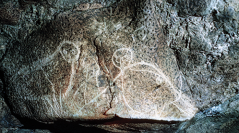

 Anthropozoologica
56 (3) - Pages 39-56
Anthropozoologica
56 (3) - Pages 39-56Previous research concerned with the significance of animals in early human evolution has overwhelmingly focussed on large mammals – especially the iconic suite of herbivores and carnivores once inhabiting the Eurasian Mammoth steppes. Building on earlier work of the author, this paper addresses the underrated importance of owls for human life throughout the Pleistocene – predatory birds which only occasionally feature in Palaeolithic visual culture and have hitherto attracted scholarly attention mainly as taphonomic agents. We argue that Pleistocene strigiformes had a crucial role to play in the formation, consolidation and perpetuation of the human sense of place, contributing vitally and in various ways to evolving ideas of landscape and the human spatial experience. By reviewing the archaeological evidence before the dawn of the Holocene warm period, we show that two consecutive phases of early human-owl interaction can be distinguished: a pre-Upper Palaeolithic phase during which hominins and owls shared similar locales, yet cohabitation was essentially non-contiguous; and an Upper Palaeolithic phase during which human-owl relations became increasingly variable and region-specific, so that some strigiform others could emerge as meaningful neighbours. The paper demonstrates how the contextualisation of instances of Upper Palaeolithic owl imagery can clarify the entanglement of these birds with early place-making practices. These data add to the appreciation of deeply interlaced, co-evolutionary human-animal trajectories shaping the human condition. Despite their often-peripheral sociocultural significance, owls must be acknowledged as an irreducible part of the animal context through which the making of humanity was ultimately made possible.
Strigiformes, archaeo-ornithology, human-animal studies, Palaeolithic, animal history, multispecies ecology, more-than-human geography, visual culture, parietal art, place-making.